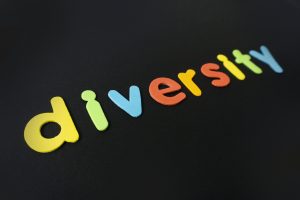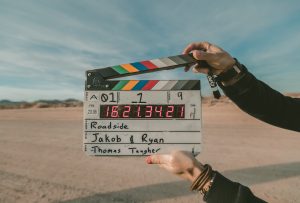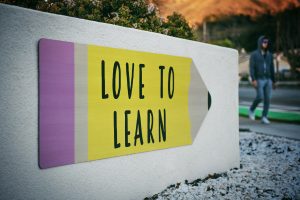2.8 UDL, DEI/EDI – Diversity, Equity and Inclusion, IDEA & IDEALSS

There are many different acronyms representing challenges that humanity experience. We’re going to have a look at some of the various ones that are currently being used, new ones that are being used as well as the importance of all of them.
UDL
“Universal design for learning (UDL) is a framework to improve and optimize teaching and learning for all people based on scientific insights into how humans learn.” (CAST, 2018) (1)
d

- create podcasts
- create videos
- alternatives for auditory information
- inclusive learning environment

Figure 2.8.3 Photo by Jakob Owens on Unsplash - removing time limits
- visual learning
- videos with closed captions
- link text
- tables / charts
- colour contrasts
- assess to tools and assisted technology
- communication options
- checklists
- note taking
- accessibility checkers
- Options (podcasts, videos etc)

Figure 2.8.4 Photo by Soundtrap on Unsplash - creating OER textbooks with case studies or solutions
The UDL Guidelines are a tool used in the implementation of Universal Design for Learning, a framework to improve and optimize teaching and learning for all people based on scientific insights into how humans learn.
For More Information:

DEI / EDI
DEI: Diversity Equity & Inclusion OR EDI: Equity Diversity & Inclusion. Depending on where you work, depends on what order is used. Either way it is the same and very important to be aware. Both refer to organizational frameworks that seek to promote fair treatment and full participation of all people. It’s important to look at the communities that have been historically been underrepresented or have experienced discrimination on the basis or identity, disability, age, culture or many other components.
For More Examples:
IDEA
IDEA stands for Enhancing Inclusion, Diversity, Equity and Accessibility. All of these are very important, and accessibility is a great addition. The Enhancing Inclusion, Diversity, Equity and Accessibility (IDEA) (3) in Open Education Resources (OER Textbook) is a practical guide providing a framework and tips to enhance inclusion, diversity, equity, and accessibility in Open Educational Resources. – This is an Australian Edition but so much of it is relevant where you are from.
For More Information:
- ASCCC OERI: Inclusion, Diversity, Equity, and Anti-Racism (IDEA) Audit Framework 9-28-21 Version 1 (PDF). Access the ASCCC OERI Inclusion, Diversity, Equity, and Anti-Racism (IDEA) Audit Framework
- Universal Design for Learning (UDL) for Inclusion, Diversity, Equity, and Accessibility (IDEA) (OER Texbook)
IDEALSS
Mental Health Commission of Canada IDEALSS(4) has created a Draft Conceptual Model on IDEALLS towards an Integrated and Comprehensive Equity Framework. When we begin to look at a larger picture of each person then we can assist them in a more effective way.
IDEALSS
Intersectional, Decolonizing, Equitable, Anti-racism, Lived Experience, Sex & Gender Based Analysis and Social Detriments of Health
Any one of these specific topics in IDEALSS have so many different barriers and challenges, let alone when someone is experiencing more than one.
Challenges experienced by different communities include: vision impaired, hearing impaired, mental health, addictions, emotional, physical challenges, power imbalances, representation, active engagement, racial, age, self-determination, socially-just outcomes, violence, discrimination, harassment, stigma, financial barriers, spiritually, and unconscious bias to name a few.
What challenges have you experienced:
Reflect on situations that you have experienced in the past where you could not do something because of challenges. Create a list of ones that you have experienced.
- Create a list of ones that you have experienced.
- What were the most challenging?
- Which ones do you feel you still have?
It is very important to be aware of all the things discussed in this chapter as they have strong rippling effects in all areas that we work with when we work with people and systems we try to navigate. These topics are organic and will always be expanding and growing. It is a journey that we are on equipping ourselves …. It is not about a destination as it will always be changing and growing.
References:
- About Universal Design for Learning – CAST. (2022b, February 8). CAST. https://www.cast.org/impact/universal-design-for-learning-udl
- Universal-Design-for-learning-Standards.pdf. (n.d.). https://cdn.centennialcollege.ca/ccwiden/s/tjlz7fzhhq/universal-design-for-learning-standards
- Andersen, N. (2022, September 2). Enhancing Inclusion, Diversity, Equity and Accessibility (IDEA) in Open Educational Resources (OER). Pressbooks. https://opentextbooks.uregina.ca/diversityandinclusionforoer/
- Mental Health Commission of Canada. (2023, June 20). Toward an Integrated and Comprehensive Equity Framework: Report – Mental Health Commission of Canada. https://mentalhealthcommission.ca/resource/toward-an-integrated-and-comprehensive-equity-framework-report/

